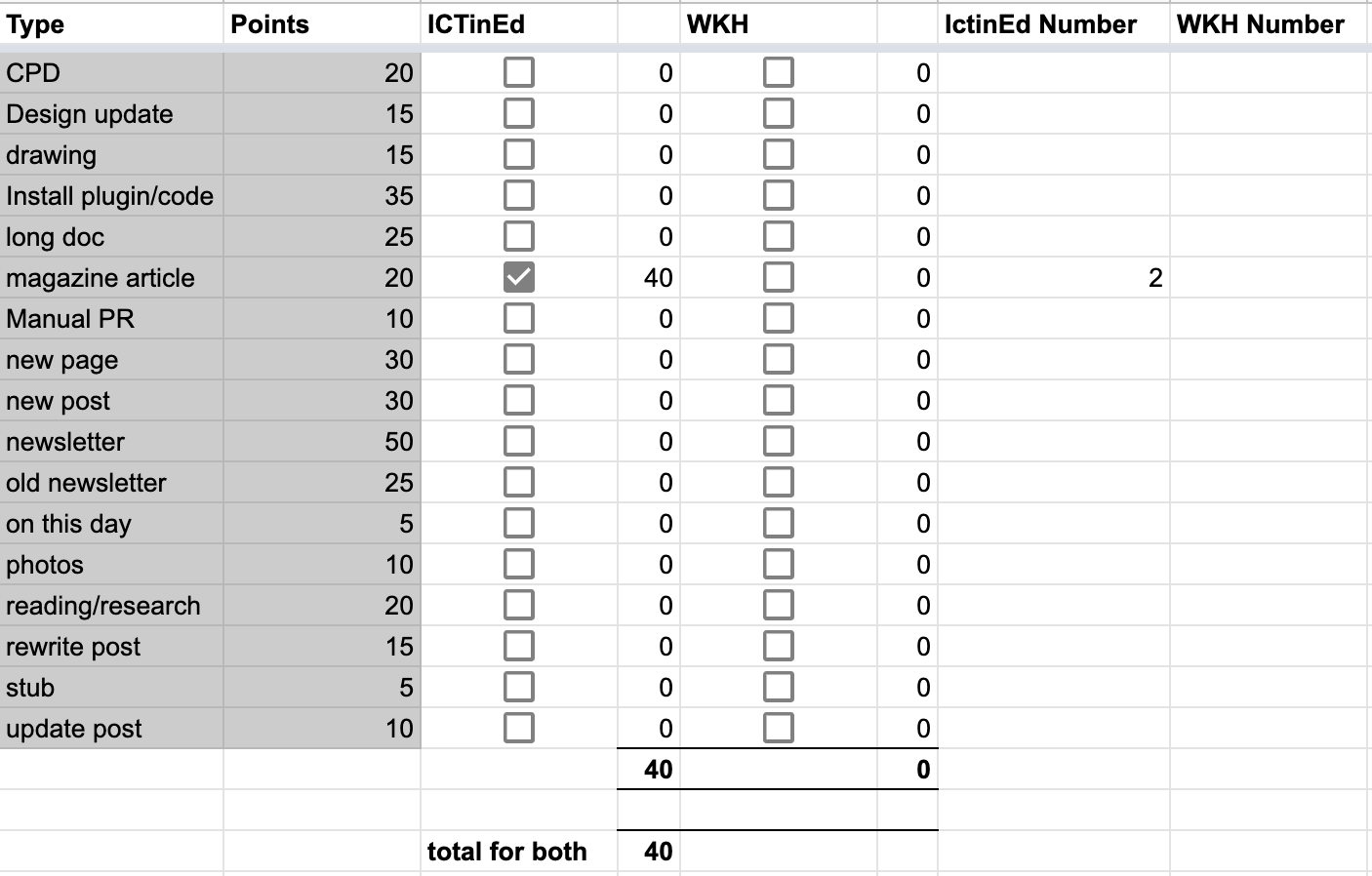In this article…
Writers’ block?
Sometimes even the most ardent writers among us just don’t feel like writing. What to do? An article on the Problogger website has made what I think is a great suggestion. It was sent in by one of Darren Rowse’s readers. (Darren is the man behind Problogger.)
Introducing a points system
The idea is to devise a points system for yourself, and a target. For example, you might set yourself a target of 50 points a day that you “have” to achieve, with points allocated to different activities, like 50 points for a blog post.
My points sheet spreadsheet
I have been experimenting with this idea, and devised a spreadsheet, which is also an experiment. I’ll explain how the spreadsheet works, and then say how it could be improved.
Points spreadsheet by Terry Freedman
The left-hand column contains the various activities I tend to undertake. The next column shows the points allocated to the activities. The number of points in each case broadly reflects the amount of time and effort involved. Then there’s a tick box, which I’ll explain in a moment.
I have two main blogs, ICT & Computing in Education, and Writers’ Know-how. Also, sometimes I write more than one blog post a day for one or both blogs. This is where the columns “ICTinEd Number” and “WKH Number” come in.
Here’s how it works
Say I write republish two magazine articles in separate posts on the ICTinEd blog. I tick the box in the appropriate row, so that the spreadsheet “knows” it has to give me some points.
But how many?
To find out, it “looks” in the ICTinEd number column, to see how many instances of that activity I’ve undertaken. Then it multiplies that by the number of points allocated.
As you can see, the spreadsheet adds up the number of points achieved for each blog, and for bothy blogs together.
Behind the scenes
Here’s how the spreadsheet does its stuff. It’s a lot less scary than it might seem.
Points spreadsheet formulae, by Terry Freedman
Here’s what’s happening, taking the magazine article row as an example. The formula in cell D7 is:
=if(C7=True,B7*G7,0)
This means:
If the box in C7 is ticked, then multiply the number of points allocated to this activity (B7) by the number of times I did it (G7). Otherwise, put a zero in the cell D7.
How the points spreadsheet could be improved
Use words rather than numbers
A quick win would be to name the cell ranges. Then you could have formulae like:
=if(DoneOrNot=True,Points*ICTinEdNumber,0)
This is the same as the one above, and yields exactly the same result. However, as you can see, it’s a lot easier to understand. This is important for when (not if) something goes wrong: you need to be able to see fairly quickly what’s going on, or what should be going on.
Creating named ranges is easy to do in Google Sheets and Microsoft Excel. You can look up the Help, but I will try to write an article about it as well.
More than a day
My spreadsheet allows me to only enter the activities for one day. A better idea might be to design it to allow me to enter the details over the course of a week, or a month. Perhaps devising some formulae or code to store the data so I can see if there are any trends over a longer period of time. That will take a bit more thinking about!
Has it incentivised me?
Too early to tell, but I have noticed that if I hit, say, 30 points I have a think about what I could do to just push it up to 50! It’s all a bit contrived, of course, but my guiding principle here is: don’t knock it till you’ve tried it :-)



